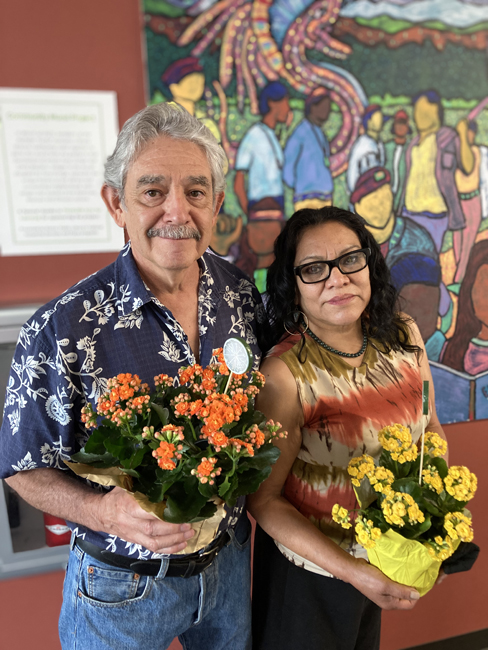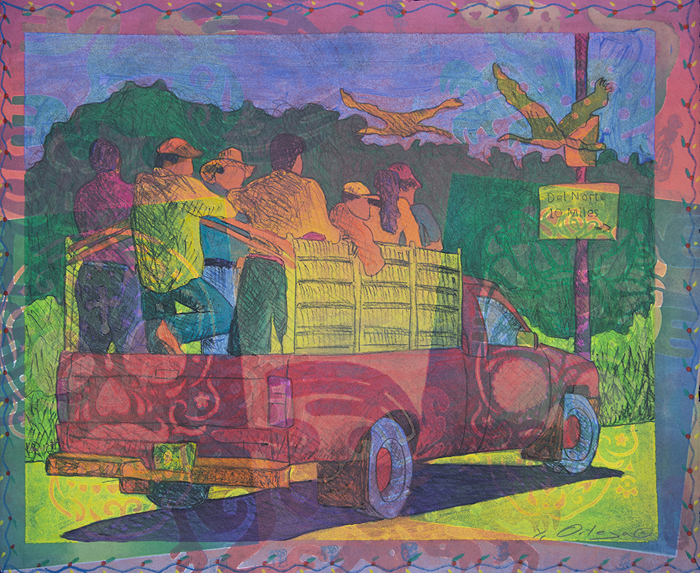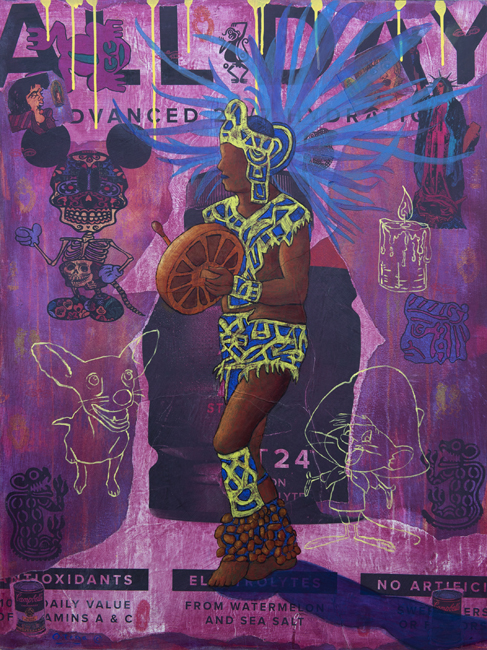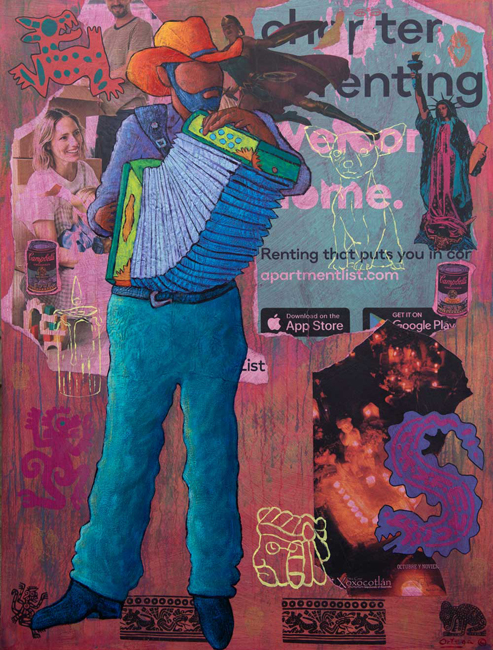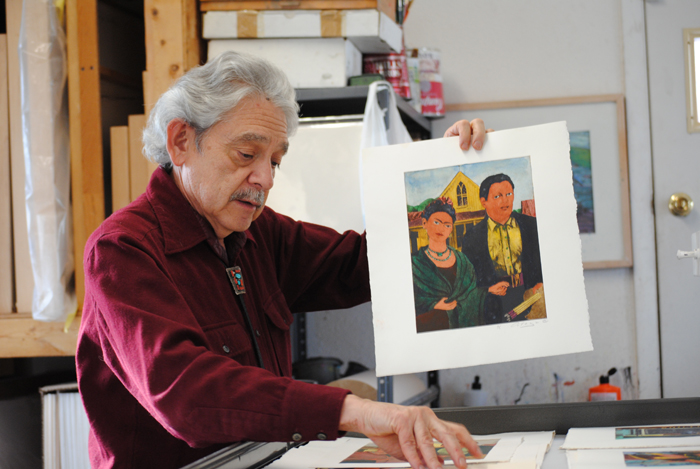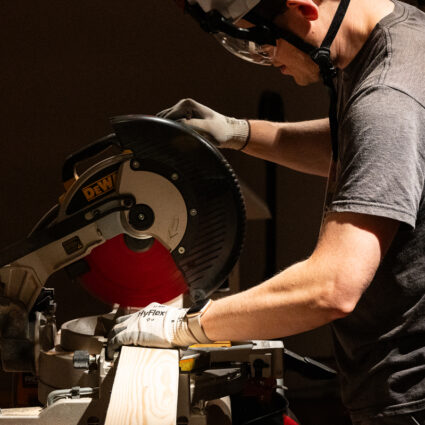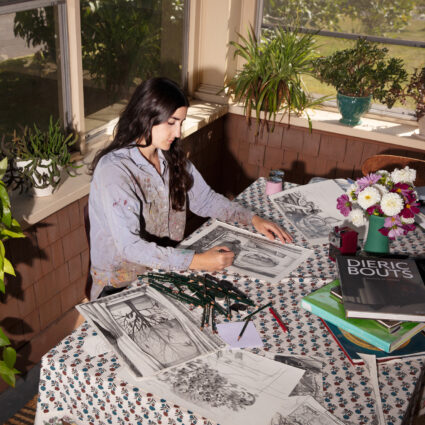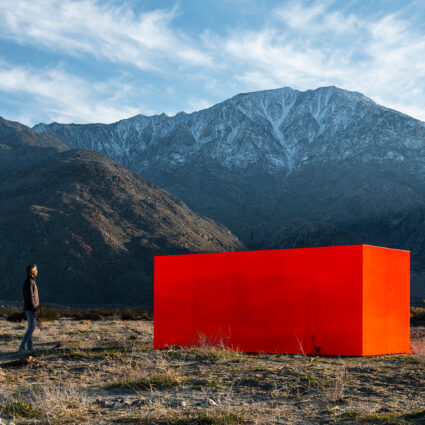Tony Ortega, a prolific artist and longtime Denverite known for his acrylics, pastels, prints, and murals, observes and honors the city’s vibrant mix of Chicano, Mexican, and Anglo cultures.
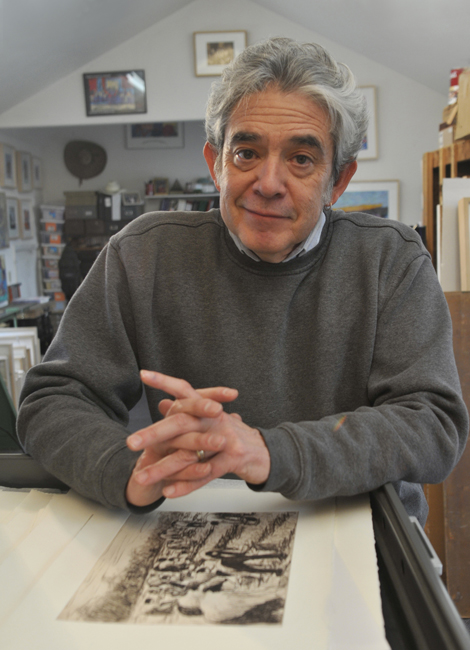
Painter, printmaker, and muralist Tony Ortega is invested in the heart and soul of Denver, especially the historically Latino neighborhoods north and west of downtown. His deep community roots shine through in works that reference Latino-themed street scenes, celebrations, social issues, and everyday slices of life.
Ortega has called Denver home for six decades, becoming a consummate observer who can translate gatherings and cultural touchstones from familiar places into vibrant, insightful, and sometimes humorous works. At the same time, he never loses sight of his own background as a child in rural Pecos, New Mexico, living in a bilingual household before his family moved to Colorado.
“Coming into an urban area,” Ortega says, “there was always this juxtaposition of English and Spanish, and Mexican food and non-Mexican food, and being a religious Catholic and being in a more secular society. It wasn’t long before I started playing with images that represented this blend.”
One of Ortega’s most well-known works is Super Hombre, springing from his love of comic books and Saturday morning television. Superman, of course, is a mainstream American construct.
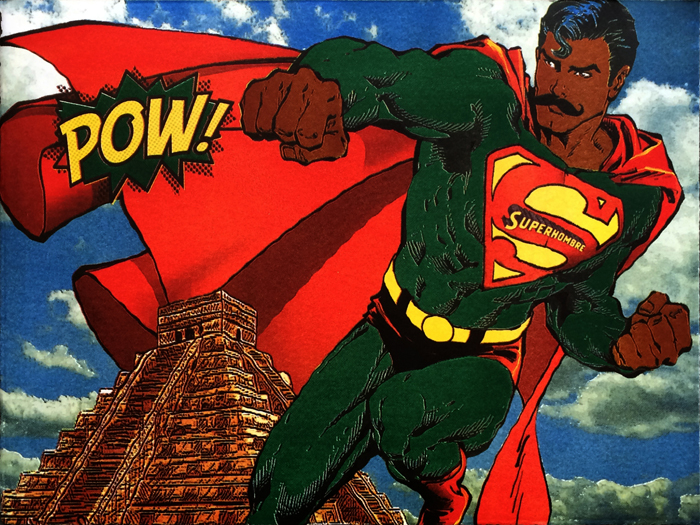
“What I’ve done is turn that around,” Ortega says. “I made Superman brown, with a mustache. I made his colors the colors of the Mexican flag, and then instead of leaping over a skyscraper he’s leaping over a Aztec pyramid.”
Ortega has exhibited extensively in the region and has several national and international exhibitions to his credit. In addition, he has been a full-time art professor at Regis University in northwest Denver since 2004.
Along with seventeen other artists with Colorado ties, Ortega is included in Breakthroughs: A Celebration of RedLine at 15, which recently opened at Museum of Contemporary Art Denver. RedLine Contemporary Art Center in Denver is marking its fifteenth year as one of the city’s major organizations offering artist residencies and community outreach. From 2018 to 2020, Ortega served as a resource artist at RedLine, where he mentored emerging and mid-career colleagues.
Southwest Contemporary received a sneak peek of Ortega’s new works for Breakthroughs during a recent studio visit. A second-floor addition to his home on the Northside—as this Latino yet gentrifying area of Denver is known—serves as studio space. It’s small but efficiently organized, with archived works and works in progress lining the walls and filling metal flat files and wooden cubbies.
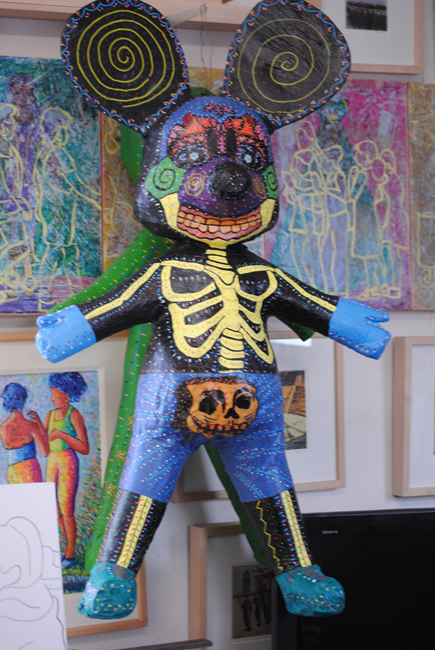
Immediately noticeable on a shelf are two oversized Campbell’s “Pozole de Pollo” soup cans holding art implements—a gently humorous nod to Warhol. Tucked away in its case is an accordion—Ortega took accordion lessons as a youngster—which helps explain his frequent depiction of accordion players.
Ideas often originate at the desk beside the window, but Ortega remarks that he’ll brainstorm at random times, for instance, while riding his bike or traveling.
Nuestra Señora de la Malinche (2022) for the RedLine exhibition, which remains on display through May 28, 2023, began germinating when Ortega was in Mexico City and saw an archival postcard from the Mexican Revolution. Ortega says the image pays tribute to the “unknown soldiers” (or adelitas) of the battle, where women accompany husbands and sons and offer a variety of support.
The relief print attests to Ortega’s desire to try new things, in this case, the technology of large-format laser cutting for the resulting woodblock print, when traditionally he’s made much smaller prints—hand-colored etchings, silkscreens, and lithographs, to name a few. Computer software has become integral to Ortega’s work, too.
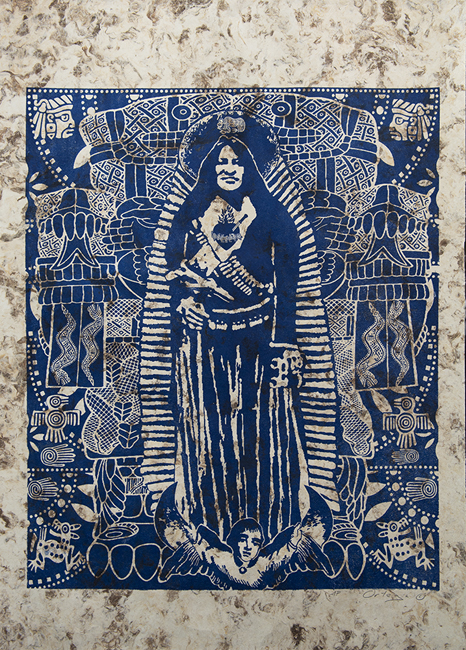
“I found out about Photoshop through my students,” Ortega says, “and since I’m a printmaker it made a lot of sense. The idea of printing is a sense of layering, and Photoshop relies on the layering process.”
Thanks to his travels and various workshops, he’s been inspired to experiment with iPad apps for stylized photography—examples from Cuba and New Mexico hang in the studio—and art videos that mash up American and Mexican popular culture.
Ortega calls “hybridity” a guiding force in his work. For instance, in the large acrylic and collage piece El Acordeonista (2022), Ortega juxtaposes found imagery and Mexican iconography with the main subject to comment on the social, political, and cultural implications of being Latino in America.
“I try to select scenes where I notice some kind of cross-cultural connection,” Ortega says. “Somehow the environment shows the demographics, or it shows the diversity. Somehow it also shows what I call hybridity, the mixing.”
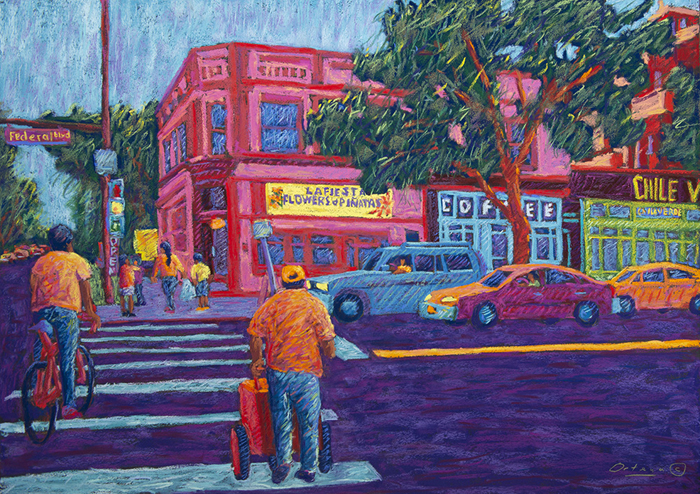
The mood changes in a work such as the vibrantly colored La Fiesta, Flowers, Piñatas, Coffee y Chili Verde (2022), capturing a bustling street corner. It exemplifies Ortega’s recognizable narrative style as well as his reverence for the small but vital moments in life.
Both pieces were on view in Chicanarte de Aztlán, a recent solo exhibition of almost forty acrylics, pastels, and prints at William Havu Gallery in Denver’s Golden Triangle art district. For Ortega, 2023 marks forty years of representation at the gallery, one of the city’s most prestigious.
For more than twenty-five years, Ortega has joined with community organizations, schools, and art spaces for the collaborative creation of indoor and outdoor murals, with Ortega’s style evident in dozens of works celebrating Colorado’s racial and ethnic diversity. In an important milestone for Denver, he helped create a mural in La Raza Park, which is historic for being a nexus of Chicano activism in the 1970s.
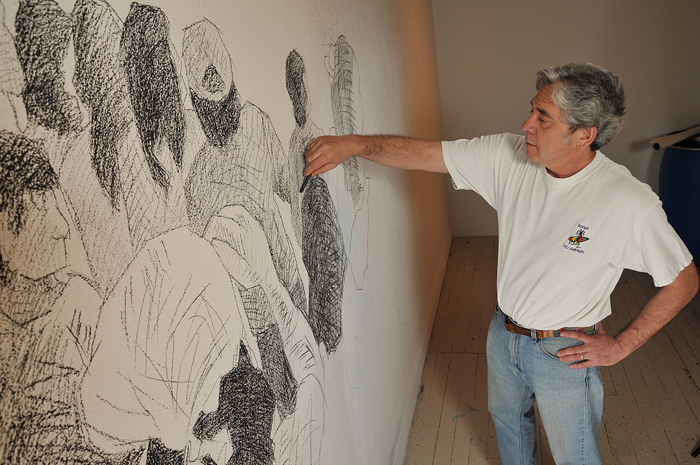
Ortega came to mural making relatively late in his career, he says, but has always felt strongly about its contributions to Chicano culture. He is active in conservation efforts through the Chicano/a/x Murals of Colorado Project.
Murals are a prime example of community advocacy for both Ortega and his wife, artist Sylvia Montero, in the Northside and elsewhere. Louise Martorano, RedLine’s executive director, says Ortega’s social consciousness makes him an inspiration to younger artists.
“There’s essentially a fluidity between his engagement with the community and his art practice. It’s very much a braided approach,” Martorano says, adding, “We all love to brag about Tony, because he is such a force to be reckoned with.”
